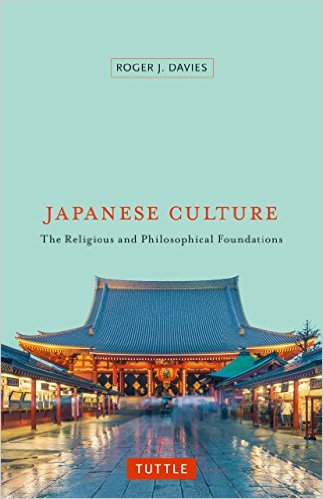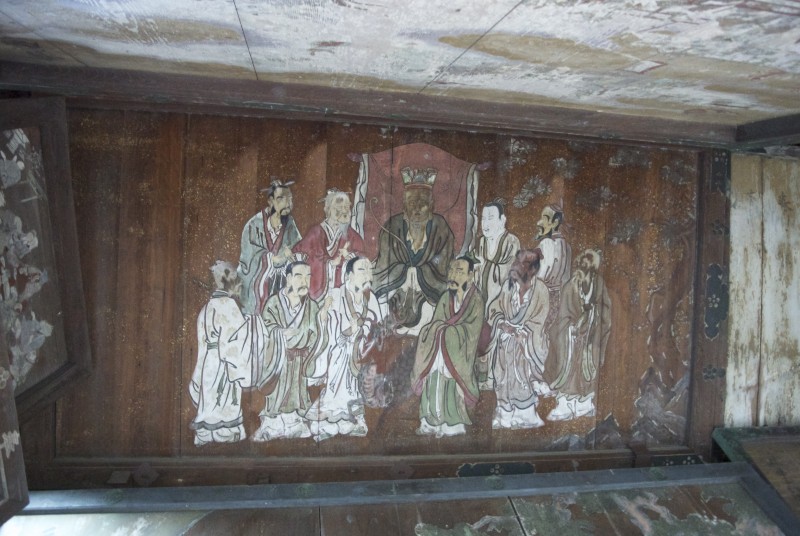 A book on Japanese Culture written by an academic and subtitled ‘The Religious and Philosophical Foundations’ hardly promises to be light reading. Yet this relatively slim volume (154 pages), while not exactly a bundle of laughs, is clear, accessible and informative. Indeed, one could go further and say that it’s one of the shortest yet authoritative overviews in print. ‘A well-rounded, succinct, and thought-provoking analysis’ says Alex Kerr.
A book on Japanese Culture written by an academic and subtitled ‘The Religious and Philosophical Foundations’ hardly promises to be light reading. Yet this relatively slim volume (154 pages), while not exactly a bundle of laughs, is clear, accessible and informative. Indeed, one could go further and say that it’s one of the shortest yet authoritative overviews in print. ‘A well-rounded, succinct, and thought-provoking analysis’ says Alex Kerr.
The contents speak of the clarity of concept. After a couple of short sections on The Origins of the Japanese and Approaches to Japanese Cultural History, the book lays out its essentials – Shinto, Buddhism, Taoism, Zen, Confucianism and Western Influences. Refreshingly, there’s no attempt to put forward a theory explaining Japaneseness. Rather the book has a sythesising function, with the main assertions referenced to standard authorities such as Reischauer and Alan Watts, etc.
The book evolved out of classes taught at Hitotsubashi University in Tokyo to groups of international business students, and it takes the form of a textbook in that each section is followed by Discussion Questions. However, that does not mean that it is unsuited to personal reading, for the material is well-written and the discussion questions provide food for thought.
The book steers a sensible course through the choppy waters of unadulterated praise and outright condemnation. I was happy to see acknowledgement in the early chapter that ‘the earliest religion (Shinto) has much in common with the Shamanism of north-east Asia’ rather than the trite assertion of it being unique to Japan. The book acknowledges too the borrowings from ‘southern China evident in Japan, including the wet cultivation of rice and the Japanese physique’. Despite this, the book notes, the Japanese have cultivated a self-image of being racially pure and homogenous. (Interestingly the selection of mixed blood models for Miss Japan and Miss Japanese Universe in the past couple of years show that this is now being challenged.)
Not all the material is familiar. For example, the idea of menstruation as an impurity is relatively well-known in Shinto, but the book provides some surprising details: “Women’s menstruation is still considered to be kegare (impure), and so women are barred (or used to be barred) from certain practices in Japan. For example, they are still not permitted to enter the dohyo in Sumo, some mountain shrines such as the one at Mt. Ishizuchi still prohibit women from attending the mountain-opening ceremony every July, and there is still a belief that pregnant women should not attend funerals.”
Some of the assertions are also far from standard. ‘Early Shinto in Japan can be classified into two categories, ujigami and hitogami‘, the book asserts while referencing a 1967 article by I. Hori. ‘The former was closely tied to the clan system and the agricultural rituals of agrarian communities; the latter is linked to powerful shamanistic individuals, both male and female, who were believed to have intimate access to kami and the world of the spirits.’
The importance of Taoism and Confucianism in shaping Japanese thinking is often overlooked, but the book gives a good account of their significance. If there was one section I found problematic it was that of Zen, where the author seems unduly influenced by the D.T. Suzuki school of thinking and makes expansive statements about the sect influencing the whole mentality of the country and its cultural arts. Many of the influences cited, such as the emphasis on simplicity and purity, predate the arrival of Zen, as do other aspects such as the evolution of haiku. In a series of postings on the subject, Green Shinto has tried to show how in fact Zen itself was shaped by Japanese culture, absorbing many of its salient characteristics.
Nonetheless the book can be thoroughly recommended for anyone wanting to get a basic appreciation of the historical factors shaping Japanese culture. It serves as a basic introduction, but there is much to learn from even for those familiar with the concepts. With his balanced air and refusal to indulge in glib theories, Roger Davies has produced a book that helps enormously in the demystifying of Japan.

An Edo-era ema of Confucius displayed in a Shinto shrine. The Chinese sage was honoured for his role in ethics and codifying the relationships by which the stability of state was secured.

Leave a Reply